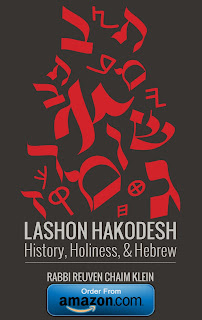The sheer sweetness of honey not only has physical holistic healing properties, but it represents a hidden message of transformation. Many medical doctors[1] tell their patients to place a drop of honey under their tongues to alleviate headaches; this act is alluded to by King Solomon in the Scriptures[2]. The Ba'al HaTanya, Rabbi Shneur Zalman Baruchovitch of Liadi (1745-1812) wrote that the mere concentration of honey is so powerful that it can incorporate anything into itself and make that element become like honey[3]. Scientifically, honey is so concentrated that it is used as a means of preserving foodstuffs (and dead people[4]) because bacteria and mold cannot live within its confines. Honey functions as a means of wholly transferring bitterness into sweetness. When dough is mixed with honey to make Maztah (unleavened, wafer-like bread), its product is given the name “rich Matzoh”[5]. The sweetness of honey is commonly used as a metaphor or means of comparison to show how precious and dear something is. In popular culture, some refer to their beloved spouses or relatives as “honey” to allude to their charm and sweetness. Indeed, the
The Mishnah says[7] that honey is one of seven liquids[8] that can cause a food to become susceptible to ritual impurity. The Talmud said[9] that honey without any applied descriptive adjectives refers to bee (devora) honey (made from flower nectar). Rabbi Yom Tov Lipman ha-Levi Heller (1579-1654) explained[10] that while in the popular parlance the unmodified word “honey” refers to bee honey, in the Scriptures; it specifically means date (Tamar) honey. The Mishna Achronah (a super-commentary on the Mishna) proved his latter assertion by stating that honey is listed as one of the seven species of “fruits” or produce for which the land of Israel are praised[11]. It therefore serves to reason that the honey mentioned in the verse refers particularly to honey which is produced by the land (i.e. extracted from dates) as opposed to honey which is produced by animals (i.e. bees)[12]. The Ramak, Rabbi Moshe ben Yaakov Cordovero (1522-1570) titled one of his most popular works Tomer Devorah, which means “Date Bee.” Among the various explanations of this obscure title, some say that the title refers to the two sources of honey whose sweetness is unparalleled.
The Philistines rhetorically asked Samson what is sweeter than honey[13]; Rabbi Dovid Altschuller (18th century Bible commentator) answered[14] that nothing is [physically] sweeter than honey. However, the sweetness of honey can also be its downfall because Rabbi Dovid Kimchi (1160-1235) writes[15] that the more honey one eats the more pain he feels, while the more knowledge one acquires, the better. The Holy Torah is considered by the Midrash[16] to be sweet, and King David even wrote[17] that it is sweeter than honey. Rabbi Shlomo Algazi the Elder (a seventeenth century Talmudist in Smyrna and Jerusalem) wrote[18] Torah is sweeter than honey because Torah was the source of honey—for it was the blueprints of the world— and one sees from its sweetness that the Torah must be even sweeter. When one truly learns the words of the Torah, one feels an incredible pleasure in understanding the teachings of HaShem and His emissaries. This pleasantry is eternal and therefore outlasts the fleeting pleasure of consuming the sweet honey. Based on the teaching of Lurianic Kabbalah from the Arizal (Rabbi Yitzchok Luria, 1534-1572), many Jews have a custom of using honey while first introducing their young boys to learning Torah (upsherin in Yiddish). This instills the great value of Torah into their pure hearts so that they can fully comprehend its greatness. The sermons of Rabbi Yehonossan Eibeshitz (1660-1764) were published as Yaaros Devash (honeycombs) posthumously by his nephew, Rabbi Yaakov Ben Yehuda Leib Eibeshitz. He explained (in the hakdama/introduction) that he entitled his uncle’s work so because arousing feelings of repentance in the hearts of the populace is sweeter than honey.
On the 18th of Iyar (Lag B’Omer, the thirty-third day of the ‘Omer) in the year 2448 (of the Jewish calendar), a supernatural phenomenon occurred for the first time: Manna fell from the sky for the hungry Israelites traveling the desert. Rabbi Moshe Ben Shmuel Schreiber Sofer (1762-1839) wrote[19] that this is the cause for the great celebration on Lag BaOmer. The mohn was sixty times sweeter than honey[20]. Although in present times doctors warn parents not to feed their infants honey, the manna was eaten by infants and—since the young children did not know of any other food tastes— it had the taste of honey[21]. The Kabbalists and Mussarists teach that during the Sefiras HaOmer (counting of the ‘Omer) a person should attempt to fix that which is wrong with him. According to Tosfos[22], honey is not considered honey until it is separated from its inedible components (i.e. the honeycomb). Similarly, one can say, that a person is not considered a whole person until he has separated himself from impurities. Furthermore, just as honey eventually crystallizes after a long and gradual process, a person can change his or her own form through a lengthy and steady process. Indeed Noah’s dove[23] specifically brought an olive branch and not honey because honey symbolized human intervention, while an olive branch was purely from HaShem himself[24].
At the conclusion of the Sefiras Ha’Omer, there is a holiday known as Shavuos (Pentecost). There is an ancient custom for Jews to eat honey on Shavuot because that day commemorates the receiving of the Torah, which is compared to honey. The earliest reference to this custom is in the Kolbo[25]. The Kol Bo writes that there is an established custom to eat milk and honey on the festival of Shavou'ot, for the Torah is compared to honey and milk, as it is written “Honey and Milk beneath your tongue”[26]. Rabbi Kalonymos ben Kalonymos of Provence (1280-1289) testified to a custom amongst German Jewry that of specially baking a honey cake for Shavuos in the shape of a ladder with seven rungs symbolizing the seven levels of Heaven[27] that G-d descended to give the Jews the Torah and the seven sefiroth of the Omer. Some scholars claim that this custom was later adopted by the surrounding Christians in their preparation of Easter Sunday during the Lent period[28].
Rabbi Mordechai Kornfeld (Rosh Kollel of Kollel Iyun Daf) wrote[29] that the liquid of honey corresponds to the holiday of Rosh Hashana (the Jewish New Year). The Daily Song (Shir Shel Yom) in the
The Chofetz Chayim (Rabbi Yisrael Meir HaCohen Kagan, 1838-1933) explains[33] why Torah is likened to honey. The Rosh, Rabbi Asher Ben Yechiel (1250-1328) writes[34] in the name of Rabbeinu Yonah Girondi (1180-1263) that if a non-kosher food falls into honey, it becomes kosher because the sweetness of the kosher honey overpowers its impure properties. His son, Rabbi Yaakov Ashri (1270-1340) codified this law into practical Halacha[35]. Although the Shach, Rabbi Shabsai HaCohen (1622-1633) agrees with this theoretically, he argues against its practicality in Halacha[36]. The Chofetz Chaim said that just as honey can change non-food into kosher, Torah can change a person to reach great spiritual planes. Through the sweetness of Torah, Torah can transform a person from impure to pure. However, warns Rabbi Avrohom Schorr (a son of the late Rabbi Gedalia Schorr, 1911-1979 and Rov of Kahal Tiferes Yaakov) that Torah can only be sweet to someone who wishes it to be so. He explains that this is the meaning of the daily Morning Prayer Veha'arev N’a (“Please Sweeten” in reference to the words of Torah). In a similar vein, Rashi[37] says, "through Torah learning, a person merits that his Yetzer Horah [evil inclination] becomes a Yetzer Tov [good inclination]."
Rabbi Elimelech Weissblum/Lipman of Lezhinsk (1717-1786) explains[38] the comparison of Torah to honey based on honey's ability to absorb the good with the bad. Torah is compared to honey because when a righteous man engrossed himself in Torah with the proper intentions (to show the uniqueness of HaShem or for the sake of the Torah itself), it is a "consumption" like eating, from which HaShem receive pleasure and enjoyment. In the allegorical conversation between HaShem and His beloved nation, HaShem says[39], "I have eaten my [wood from the] forest with my honey…eat friends [which can also be pronounced 'evil men'], drink and become drunk lovers." The wood of forest trees that is not edible is eaten along with the honey to show that HaShem accepts the honey of the righteous men (that is, their Torah study) just as He accepts the actions of the wicked, which are inedible tree bark. A righteous man is considered a "friend" of HaShem, and HaShem invites His "friend" to join the eating just as he invites the wicked.
Bar Kappara teaches[40] that if honey had been mixed into the Ketores (incense) in the
[1] Interestingly, although doctors nowadays warn parents not to feed year-old infants honey and milk because it is dangerous for them, during the Jewish servitude in Egypt, when the Pharaoh decreed all baby boys be thrown into the Nile River, a miracle occurred for the baby boys and they were hidden underground and sustained by two rocks, one which secreted honey when suckled on, and the other which secreted milk. See Seder HaDoros, Year 2368, although see Sotah 11b which says it was milk and oil, not milk and honey.
[2] Song of Songs 4:11
[3] See Torah Ohr, Exodus pg. 212
[4] Bava Basra 3b
[5] Pesachim 36a
[6] In many chapters of the Holy Scriptures: Exodus 3, 13, 33; Leviticus 20; Numbers 13, 14, 16; Deuteronomy 6, 11, 26, 31, 27; Joshua 5; Jeremiah 11, 32; and Ezekiel 20.
[7] Machshirin 6:4
[8] See Tosefta Shabbos 9:14 which quotes Deuteronomy 32:13 to prove that honey is considered a drink
[9] Bechoros 7b
[10] Tosafos Yom-Tov to ad. loc.
[11] Deuteronomy 8:8. Rashi (to Yevamos 47a) explains that in present times the
[12] Although, it could be argued that bees produce their honey from the nectar of flowers, which do grow from the ground.
[13] Judges 14:18
[14] Metzudas Dovid ad loc.
[15] commentary to Psalms 19:12
[16] Exodus Rabbah 34:7
[17] Psalms 19:12
[18] In Ahavas Olam, printed in
[19] Responsa Chasam Sofer, Yoireh Dayuh §233
[20] Berachos 57b
[21] Yoma 75b
[22] Bava Basra 80a
[23] Mentioned in Genesis 8:9-12
[24] Eruvin 18a
[25] An anonymous work on Jewish Law, presumably written by Rabbi Aharon ben Yaakov HaKohen of Lunel (1262-1325); it was first printed in Naples, 1490.
[26] Song of Songs 4:11
[27] Chagigah 13a
[28] Although, inevitably modern secular scholars claim it was the other way around.
[29] “Jewish Thought”, Volume 4, Number 1 5755/6, pg. 80
[30] Commentary to Psalms 81:17
[31] Mappah to Orach Chayim §583:1
[32] Kornfeld.
[33] In his hakdamah/introduction to Likutei Halachos on Tractate Zevachim, an Alfasi-type halachik compilation
[34] In Brachos, Chapter 6
[35] Tur, Yoreh Deiah §81
[36] See Sifsei Cohen commentary to Shulchan ‘Arukh, Yoreh De’iah §81
[37] To Zachariah, Chapter 4
[38] Noam Elimelech, Likutei Shoshanim to Psalms 97:11
[39] Song of Songs 5:1
[40] In the Braisa of Parshas Ketores,
[41] See Kerisos 6a


 orcid.org/0000-0001-9317-3282
orcid.org/0000-0001-9317-3282
